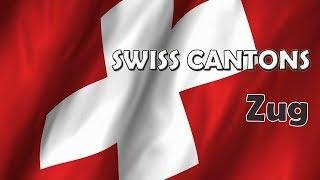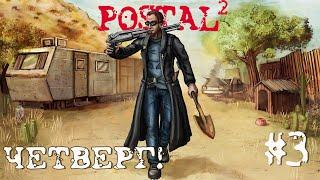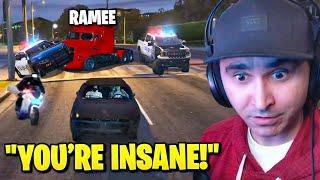
A tiny Swiss corner: 7 Facts about Zug
In this video you can find 7 little known facts about Zug. Keep watching and subscribe, as more episodes will follow!
You can now support this channel via Patreon, by accessing the link bellow. Thank you!
https://www.patreon.com/7facts
Social Media:
https://twitter.com/Sebastian2Go
https://www.facebook.com/official7facts
------------------------------------------------
More information about the video content bellow:
1. The canton of Zug is one of the 26 cantons of Switzerland. It is located in central Switzerland and its capital is Zug. At 239 km2 the canton is one of the smallest of the Swiss cantons in terms of area. The population of the canton (as of 31 December 2018) is 126,837.
2. In 1845 the canton of Zug became a member of the Sonderbund and participated in the war of 1847 which was lost to the Swiss confederation. In 1848 the remaining functions of the Landsgemeinde were abolished. Both in 1848 and in 1874 the canton voted against the federal constitutions.
3. Zug is the capital and biggest town of the canton of Zug in Switzerland. Its name originates from the fishing vocabulary; in the Middle Ages it referred to the right to pull up fishing nets and hence to the right to fish. The city of Zug has a delightful ancient quarter, the Old Town. What is more, it is nestled between the lake shore and its very own mountain, the Zugerberg. But it is much more than a beautiful city; it is an economic centre with provides many people with work. Zug is the real motor of the area.
4. Even the residents of Zug never tire of the sunsets: when the sun goes down over the lake, the horizon goes blood-red, and all eyes turn to the romantic show of colour on the water.
5. The canton of Zug is multi-faceted, despite its small size. The power of the glaciers in the ice ages are impressively shown in the lateral moraines of the mountains Walchwilerberg and Zugerberg. These are the remaining traces of the Reuss Glacier. The moraine and drumlin landscape of Menzingen and Neuheim are the result of the convergence of the Reuss Glacier and the Linth Glacier. The Swiss geologist Albert Heim (1849–1937) once noted that "this must be the most impressive moraine landscape in Switzerland". The glaciation of the Zug mountains stopped in around 15,000 BCE.
6. Zyt Tower is known to have built in the early 13th century. The 52-meter high tower was initially built as just a simple wall entrance to the old town but with the course of time, it was built higher and higher. It received additional structures till it reached the present form, which is complete with a steep hipped roof and bay windows. Finally, in the year 1574, the large clock was built on the tower that gave it the name. There is an astronomical clock right below the main clock, which has four hands to indicate the phase of the moon, the week, the leap year and the month.
7. Zug has a Fairytale world. Höllgrotten is the name given to the amazingly beautiful limestone caves near Baar that are definitely worth a visit. These caves are right adjacent to the picturesque, wild valley of the river Lorze, which displays an unbelievable array of stalagmites and stalactites. The Baar caves were discovered at the end of the 19th century. You can explore these limestone caves together with an expert guide. The stalagmites and stalactites, in their multiple hues, give each of these caves its own unique fairytale character.
More Info:
https://en.wikipedia.org/wiki/Sonderbund_War
https://en.wikipedia.org/wiki/Canton_of_Zug
https://www.myswitzerland.com/en-au/destinations/zug/
https://www.berank.com/posts/1221/interesting-facts-canton-zug
Music:
Teknoaxe - Aerobatics in Slow Motion
https://www.youtube.com/watch?v=LfaXFyNOi_M
Download Music: http://teknoaxe.com/Link_Code_3.php?q=1496
Images:
By Schulerst - Own work, CC BY-SA 3.0, https://commons.wikimedia.org/w/index.php?curid=16307019
Von Phine21 - Eigenes Werk, CC BY-SA 3.0, https://commons.wikimedia.org/w/index.php?curid=40197128
By Jakob Ziegler (according to the source "der Maler Ziegler, Schüler Distelis") - Jakob Amiet, Der siegreiche Kampf der Eidgenossen gegen Jesuitismus und Sonderbund, 1848, Public Domain, https://commons.wikimedia.org/w/index.php?curid=11017762
By Baikonur - Self-published work by Baikonur ("photo taken by me"), CC BY-SA 3.0, https://commons.wikimedia.org/w/index.php?curid=96230
By No machine-readable author provided. Baikonur assumed (based on copyright claims). - No machine-readable source provided. Own work assumed (based on copyright claims)., CC BY-SA 3.0, https://commons.wikimedia.org/w/index.php?curid=283241
By Schulerst - Own work, CC BY-SA 3.0, https://commons.wikimedia.org/w/index.php?curid=16307023
By Seilvorbau - Own work, CC BY-SA 4.0, https://commons.wikimedia.org/w/index.php?curid=42380435
Intro Creator:
Pushed to Insanity
http://pushedtoinsanity.com/portfolio-item/free-2d-outro-template-11/
You can now support this channel via Patreon, by accessing the link bellow. Thank you!
https://www.patreon.com/7facts
Social Media:
https://twitter.com/Sebastian2Go
https://www.facebook.com/official7facts
------------------------------------------------
More information about the video content bellow:
1. The canton of Zug is one of the 26 cantons of Switzerland. It is located in central Switzerland and its capital is Zug. At 239 km2 the canton is one of the smallest of the Swiss cantons in terms of area. The population of the canton (as of 31 December 2018) is 126,837.
2. In 1845 the canton of Zug became a member of the Sonderbund and participated in the war of 1847 which was lost to the Swiss confederation. In 1848 the remaining functions of the Landsgemeinde were abolished. Both in 1848 and in 1874 the canton voted against the federal constitutions.
3. Zug is the capital and biggest town of the canton of Zug in Switzerland. Its name originates from the fishing vocabulary; in the Middle Ages it referred to the right to pull up fishing nets and hence to the right to fish. The city of Zug has a delightful ancient quarter, the Old Town. What is more, it is nestled between the lake shore and its very own mountain, the Zugerberg. But it is much more than a beautiful city; it is an economic centre with provides many people with work. Zug is the real motor of the area.
4. Even the residents of Zug never tire of the sunsets: when the sun goes down over the lake, the horizon goes blood-red, and all eyes turn to the romantic show of colour on the water.
5. The canton of Zug is multi-faceted, despite its small size. The power of the glaciers in the ice ages are impressively shown in the lateral moraines of the mountains Walchwilerberg and Zugerberg. These are the remaining traces of the Reuss Glacier. The moraine and drumlin landscape of Menzingen and Neuheim are the result of the convergence of the Reuss Glacier and the Linth Glacier. The Swiss geologist Albert Heim (1849–1937) once noted that "this must be the most impressive moraine landscape in Switzerland". The glaciation of the Zug mountains stopped in around 15,000 BCE.
6. Zyt Tower is known to have built in the early 13th century. The 52-meter high tower was initially built as just a simple wall entrance to the old town but with the course of time, it was built higher and higher. It received additional structures till it reached the present form, which is complete with a steep hipped roof and bay windows. Finally, in the year 1574, the large clock was built on the tower that gave it the name. There is an astronomical clock right below the main clock, which has four hands to indicate the phase of the moon, the week, the leap year and the month.
7. Zug has a Fairytale world. Höllgrotten is the name given to the amazingly beautiful limestone caves near Baar that are definitely worth a visit. These caves are right adjacent to the picturesque, wild valley of the river Lorze, which displays an unbelievable array of stalagmites and stalactites. The Baar caves were discovered at the end of the 19th century. You can explore these limestone caves together with an expert guide. The stalagmites and stalactites, in their multiple hues, give each of these caves its own unique fairytale character.
More Info:
https://en.wikipedia.org/wiki/Sonderbund_War
https://en.wikipedia.org/wiki/Canton_of_Zug
https://www.myswitzerland.com/en-au/destinations/zug/
https://www.berank.com/posts/1221/interesting-facts-canton-zug
Music:
Teknoaxe - Aerobatics in Slow Motion
https://www.youtube.com/watch?v=LfaXFyNOi_M
Download Music: http://teknoaxe.com/Link_Code_3.php?q=1496
Images:
By Schulerst - Own work, CC BY-SA 3.0, https://commons.wikimedia.org/w/index.php?curid=16307019
Von Phine21 - Eigenes Werk, CC BY-SA 3.0, https://commons.wikimedia.org/w/index.php?curid=40197128
By Jakob Ziegler (according to the source "der Maler Ziegler, Schüler Distelis") - Jakob Amiet, Der siegreiche Kampf der Eidgenossen gegen Jesuitismus und Sonderbund, 1848, Public Domain, https://commons.wikimedia.org/w/index.php?curid=11017762
By Baikonur - Self-published work by Baikonur ("photo taken by me"), CC BY-SA 3.0, https://commons.wikimedia.org/w/index.php?curid=96230
By No machine-readable author provided. Baikonur assumed (based on copyright claims). - No machine-readable source provided. Own work assumed (based on copyright claims)., CC BY-SA 3.0, https://commons.wikimedia.org/w/index.php?curid=283241
By Schulerst - Own work, CC BY-SA 3.0, https://commons.wikimedia.org/w/index.php?curid=16307023
By Seilvorbau - Own work, CC BY-SA 4.0, https://commons.wikimedia.org/w/index.php?curid=42380435
Intro Creator:
Pushed to Insanity
http://pushedtoinsanity.com/portfolio-item/free-2d-outro-template-11/
Тэги:
#zug #swiss_cantons #sonderbund_war #capital_of_zug #zyt_tower_zug #zug_sunset #hollgrotten #facts_about_zug #switzerland #blinder00Комментарии:
A tiny Swiss corner: 7 Facts about Zug
Sebastian ioan
Медицинская помощь
NEOS
СТРИМ POSTAL 2ЧЕТВЕРГ | БУДЕТ БОЛЬНО | #2К
Goose Gaming (Игровой Канал)
kumpulan video lucu gokil | video lucu
Jono Capung
the "YouTube Controversies Iceberg", explained
toastedcherries
UZUN MAKARNA İFŞA !!! | WAP CHALLANGE
XareS TikTok
viral parakan 01 no sensor
black beetle











